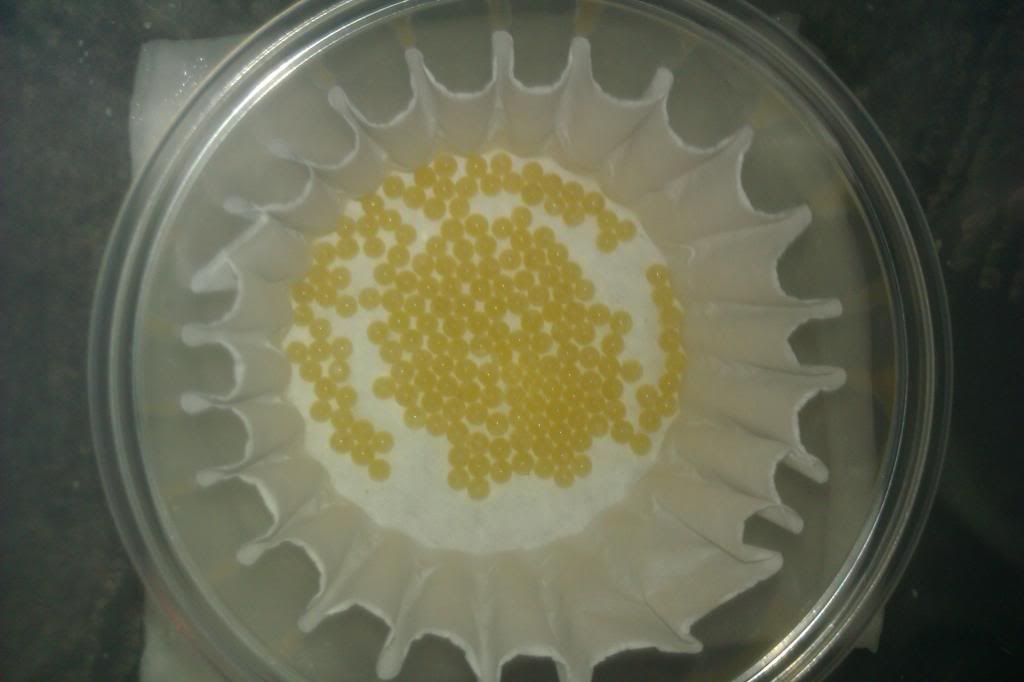- Joined
- Oct 23, 2007
- Messages
- 1,145
Sac #1 has been laid. Surprisingly this is from the female that molted last and was only paired with 2 of the males and not the full 4 I had at the time (like the other 2 females).
I suspect using acetone will do the trick. The key to preserving molecular structure of DNA and such is to rapidly dehydrate so nucleases, etc. are inactive. It will rapidly dry them out, especially if you use cold acetone. May have to soak a bit, ~24 hrs, so this could be best achieved in a freezer or fridge if the freezer is not large enough to hold an acetone-proof vessel in it.I do have a couple of males nearly on their way out. Not sure how I should preserve said specimens so they survive a trip without turning to a gelatinous mass.
I also hope I get viable sacs this time and will send a few slings off. Who do you suggest? Rick West is nearby.
Awsome!!!I know these are more of the same, but here are more night time photos of my Pamphobeteus sp. Chicken Spider. 3 were out and about last night.




Acetone does rapidly dry indeed, which is an advantage for preservation since it immediately stops protease/nuclease activity.Yes please preserve specimens, especially as i think you/someone went to the trouble of getting collecting and export permits, which was unusual in this hobby. And if you do preserve, do make data labels with as much detail on history as possible. E.g. Wild source location, collector, import details, then culture information like age of maturity and date of death/preservation.
First killing in the freezer is probably best. Also good for short term preservation, provided specimen inside a solid box/tub that wont get crushed. Then longer term preserve in Ethanol or IMS, typically 70% for morphology. Then keen cool. [a specimen soaked in 70% ethanol can then be mailed shipped, provided there is only minimal free liquid - there are many shipping regulations]. If you want to preserve tissue for DNA remove a whole leg3 from either a dead or live spider and put that into absolute alcohol. Probably best to ask at a science dept. at local university or school. Acetone and isopopyl are bad for making specimens go brittle, i suggest avoid those in favour of ethanol where possible.
I wish. Kept the sac at about 76-78'F in an incubator. No development at all and after day 50 the eggs started to go bad. Not sure if they were fertilized or not. I still have one gravid female left and the other young female just molted, so I paired her up with my last male.Any updates ? Guessing your inundated with slings right now.
It is very sad that you have yet to get a viable sac from these spiders after all this effort. I hope this coming sac(s) work(s) out for you. It would be a shame to run out of males with no production.I wish. Kept the sac at about 76-78'F in an incubator. No development at all and after day 50 the eggs started to go bad. Not sure if they were fertilized or not. I still have one gravid female left and the other young female just molted, so I paired her up with my last male.
Any suggestions from anyone? This is the second sac from this female that has not developed. She was one of the solitary females found and I wonder if she is not fertile at all and just produces phantom sacs.
